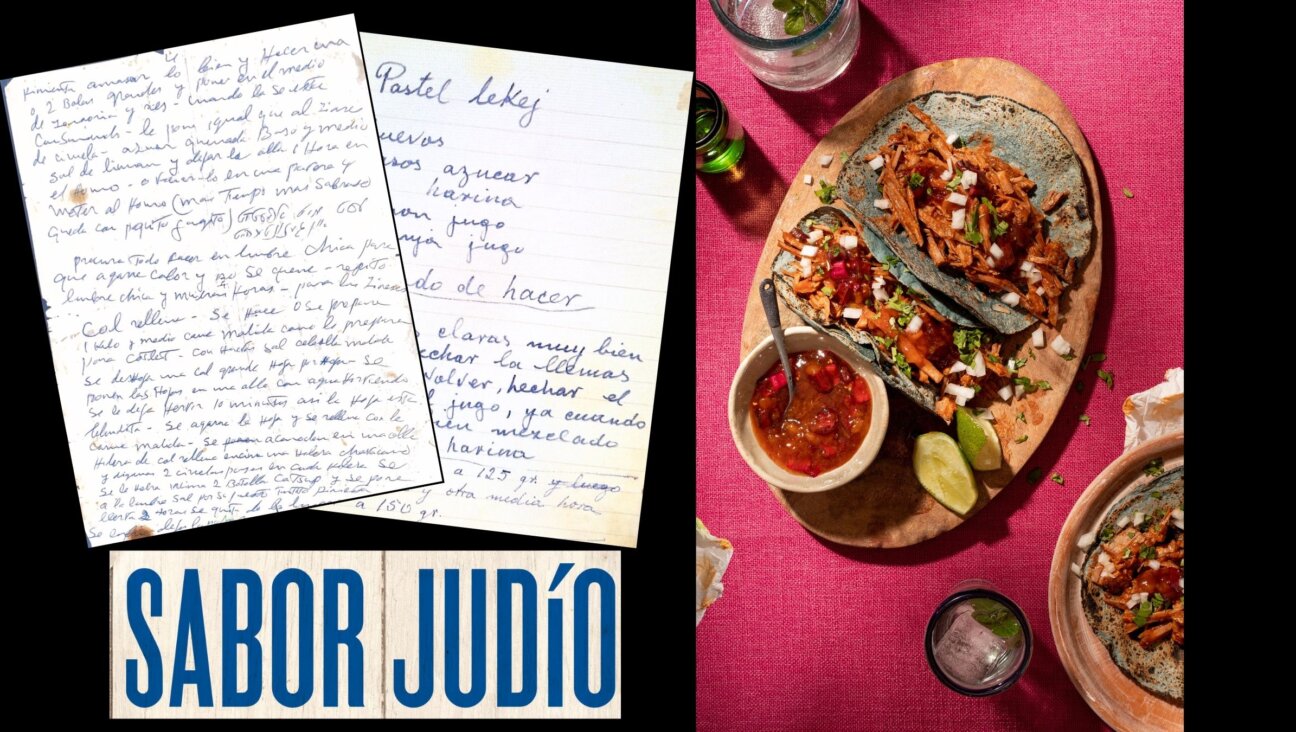Shabbat Meals: Family Just Tastes Different In Israel — Spiced Moroccan Fish

Image by iStock
I’d usually get the call on Thursday night or Friday morning from my Israeli relatives Ariella and Yehudit. “Come over for Shabbat,” they’d say to me, not asking so much as insisting. With family in Israel, I found, there’s no need for prior notice or formal invitations to a meal. Family, like everything in Israel from dress codes to its approach to higher education, is just more relaxed.
I had visited Israel many times before finally living there for a year, and on each visit I coordinated part of my travels with my relatives in Shoham and Ramat Gan, just outside of Tel Aviv. Usually my cousins invited me to a huge meal with twenty or so family members at once, or they would meet me in Jerusalem or Tel Aviv to show me the sites for a few hours. But when I moved to Israel in 2007 I still felt as if I hardly knew my perennial gracious hosts. It was high time to really meet my family.
Ariella, Yehudit and Ya’kov are three siblings in their early 50s, each very different, each with varying levels of Jewish observance (from fully Orthodox to completely secular) and each with children and families in beautiful homes. They’re related to me through my father’s mother from Poland. Somehow both Ariella and Yehudit did not inherit their mother Rachel’s prowess in the kitchen, but both conveniently married Iraqi men — Yisrael and Shaul — with strong cooking skills, a love for their Iraqi heritage, and an appreciation of foods from around the world which they incorporate into their meals.
So my Shabbat dinners in Israel, usually at either Ariella or Yehudit’s house, were always Iraqi-inspired, with Italian, Indian and North African notes. Shabbat dinner would typically start with a fish course, then would include a chicken or red kubbeh soup (an Iraqi bulgur dumpling with minced beef in a beet red broth), rice and spiced beans, various Israeli salads, stewed beef and a rotating cast of chicken dishes, some with curry, or spicy sauces, and some just simply with salt, olive oil and rosemary. When Shaul was ambitious he would bake a focaccia.
Both households placed tremendous importance on the fish course, which stood out for me because in my house growing up we rarely ate fish on Shabbat, save the occasional gefilte fish. As it turned out, Yisrael and Shaul were disgusted by fish, but since their Iraqi culture celebrates the Sabbath by eating both fish and meat in the same meal, both cooks would prepare dishes that they never tasted. That didn’t keep them from pushing it on the rest of us or developing well balanced flavors.
Shaul usually prepared two kinds of fish, a salmon and a traditional Moroccan Harayme, a white fish cooked in a thick spicy tomato sauce. I always opted for the Harayme because the white fish was the perfect canvas for the flavors of the tomato, cilantro and hot paprika. The taste was unfamiliar to me at first, but Shabbat after Shabbat, the Harayme proved to be the perfect appetizer for a consistently comforting meal.
Living abroad can be a harrowing and isolating experience, especially in a place such as Israel, where the cultural differences can be frustrating despite a shared Jewish culture. Those family Shabbat meals grounded me during my year of wandering, and were a welcome break from my bohemian Tel Aviv existence. At Shabbat dinner I felt cared for, like a true member of the family, and no more so than when Ariella would push more and more food on my plate, saying “you’re too thin” and “you don’t eat well enough on your own” and “shouldn’t you really just finish off that last bit of rice?”
Shaul’s Harayme
White Fish in Spicy Tomato Sauce
Serves Four
1 onion, chopped
4 garlic cloves, chopped
3 tablespoons sweet paprika
1 tablespoon hot paprika
2 tomatoes, chopped
¼ cup of water (or more if needed)
1 heaping teaspoon of tomato paste
salt to taste
Fresh chopped cilantro, about a handful, optional 1/4 teaspoon of ground coriander, optional
4 pieces of any kind of white fish filet, approximately 100 grams (or a ¼ of a pound) each (Shaul usually cooks with grouper), skin removed
1) Sautee the onions until golden in a wide skillet over medium heat. Then add the garlic and sauté for one minute.
2) Add the sweet paprika, then after about 30 seconds add the hot paprika. Cook until just fragrant, about one minute.
3) Then add the chopped tomatoes, cover, and steam them until tender and they reduce to about half their volume, about 5 minutes.
4) Uncover and add ¼ cup of water and a spoon of tomato paste and salt to taste. The sauce should look like a paste.
5) If using, add a handful of cilantro and a ¼ teaspoon of ground coriander. Optional.
6) Then add the fish to the sauce. Recover and cook on a low flame for about 15 minutes, until the fish is completely white and cooked through.
7) Serve covered with the tomato paste.
A message from our CEO & publisher Rachel Fishman Feddersen

I hope you appreciated this article. Before you go, I’d like to ask you to please support the Forward’s award-winning, nonprofit journalism during this critical time.
At a time when other newsrooms are closing or cutting back, the Forward has removed its paywall and invested additional resources to report on the ground from Israel and around the U.S. on the impact of the war, rising antisemitism and polarized discourse.
Readers like you make it all possible. Support our work by becoming a Forward Member and connect with our journalism and your community.
— Rachel Fishman Feddersen, Publisher and CEO























